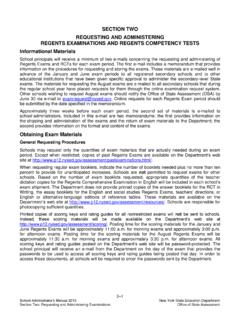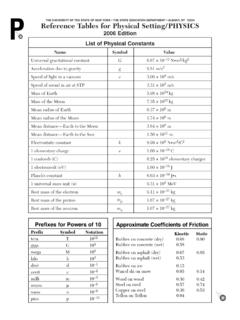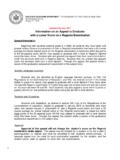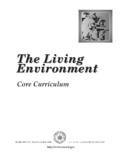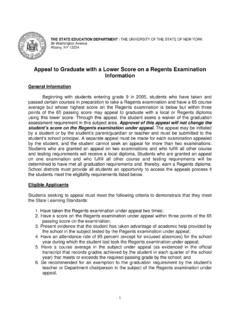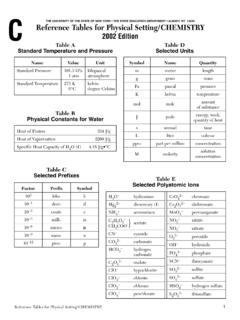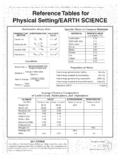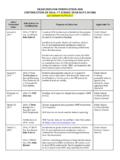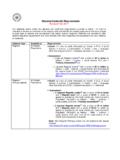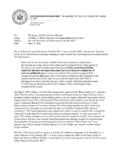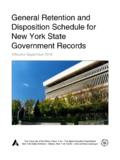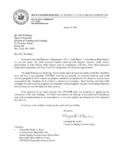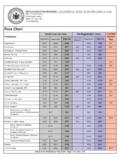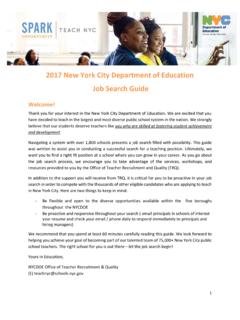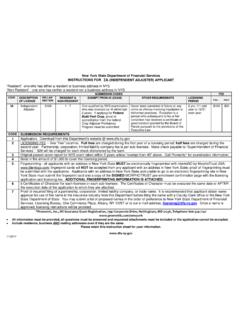Transcription of A Parent's Guide: Special Education in New York …
1 Special Education in new york State for Children Ages 3 21 A Parent s Guide The University of the State of new york The State Education department Vocational and Educational Services for Individuals with Disabilities Albany, new york 12234 May 2002 THE STATE Education department /THE UNIVERSITY OF THE STATE OF new york /ALBANY, NY 12234 DEPUTY COMMISSIONER FOR VOCATIONAL AND EDUCATIONAL SERVICES FOR INDIVIDUALS WITH DISABILITIES Tel. (518) 474-2714 Fax (5180 474-8802 Dear Parents and Families: Parents and family members are critical partners, along with school district personnel, in the Education of their children. Parents provide essential information to teachers and administrators, play an important role in deci sions made about their children and can be a key to supporting high expectations for their children during their school years.)
2 The new york State Board of Regents and the State Education department have set high goals for educa tional programs and services for students with disabilities in new york . Among them are: All students will meet high standards for academic performance and personal behavior and demon strate the knowledge and skills required by a dynamic world. All educational institutions will meet Regents high performance standards. The public will be served by qualified, ethical professionals who remain current with best practice in their fields and reflect the diversity of new york State. Education , information and cultural resources will be available and accessible to all people. The Office of Vocational and Educational Services for Individuals with Disabilities (VESID) strategic plan is driven by a vision that is based on the belief that individuals with disabilities, given high expectations, opportunities and support when necessary, will live successful adult lives.
3 Children learn to become independent adults, con tributing to society and participating in the community through quality educational and social experiences with their peers. The Rehabilitation Act of 1992 states clearly that disability is a natural part of the human experience and that individuals with disabilities have the right to: live independently. contribute to society. pursue meaningful careers. enjoy self-determination. make choices. enjoy integration in the economic, political, social, cultural and educational mainstream of American society. This document provides information for parents, guardians and other family members about laws, regulations and policies affecting Special Education programs and services. However, these protections, rights and opportunities will best help students reach their full potential when parents, families and schools work collaboratively.
4 Setting high expectations for students and high standards for programs will provide the greatest opportunities for a successful adult life. Sincerely, Lawrence C. Gloeckler THE UNIVERSITY OF THE STATE OF new york Regents of The University ROBERT M. BENNETT, Chancellor, , .. Tonawanda ADELAIDE L. SANFORD, Vice Chancellor, , , .. Hollis DIANE O NEILL MCGIVERN, , , .. Staten Island SAUL B. COHEN, , , .. New Rochelle JAMES C. DAWSON, , , , .. Peru ROBERT M. JOHNSON, , .. Huntington ANTHONY S. BOTTAR, , .. North Syracuse MERRYL H. TISCH, , .. new york GERALDINE D. CHAPEY, , , .. Belle Harbor ARNOLD B. GARDNER, , .. Buffalo HARRY PHILLIPS, 3rd, , .. Hartsdale JOSEPH E. BOWMAN, JR., , , , , .. Albany LORRAINE A.
5 CORT S-V ZQUEZ, , .. Bronx JUDITH O. RUBIN, .. new york JAMES R. TALLON, JR., , .. Binghamton MILTON L. COFIELD, , , .. Rochester President of The University and Commissioner of Education RICHARD P. MILLS Chief Operating Officer RICHARD H. CAT E Deputy Commissioner for Vocational and Educational Services for Individuals with Disabilities LAWRENCE C. GLOECKLER Manager, Special Education Policy RITA D. LEVAY Coordinator, Special Education Policy ERLINDA REJINO The State Education department does not discriminate on the basis of age, color, religion, creed, disability, marital status, veteran status, nation al origin, race, gender, genetic predisposition or carrier status, or sexual orientation in its educational programs, services and activities. Portions of this publication can be made available in a variety of formats, including braille, large print or audio tape, upon request.
6 Inquiries concerning this policy of nondiscrimination should be directed to the department s Office for Diversity, Ethics, and Access, Room 152, Education Building, Albany, NY 12234. Requests for additional copies of this publication may be made by contacting VESID Special Education Policy Unit, Room 1624 OCP, Albany, NY 12234 or your local SETRC. Table of Contents The Special Education Process .. 1 Initial Referral for Special Education 2 Individual Evaluation 4 Eligibility for Special Education .. 6 Individualized Education Program (IEP).. 8 Annual Review/Reevaluation .. 12 Your General Rights as a Parent .. 13 Your Child s Educational 15 Evaluations .. 17 Notice and Parent 18 Reimbursement for Placement Made by Parents in a Private School.
7 22 Timelines .. 23 Due Process 24 Disciplinary Procedures .. 32 33 Request for Due Process 35 Members of 37 Resources .. 39 VESID Special Education Quality Assurance Regional 40 Parent 41 Other 42 Agency Resources ..43 Index .. 45 v The Special Education Process What is Special Education ? Special Education means specially designed individualized or group instruction or Special services or programs to meet the unique needs of students with disabilities. Special Education services and programs are provided at no cost to the parent. What are the steps in the Special Education Process? Step 1: Initial Referral for Special Education Services Students suspected of having a disability are referred to a multidisciplinary team called the Committee on Special Education or the Committee on Preschool Special Education .
8 Step 2: Individual Evaluation Process The Committee arranges for an evaluation of the student s abilities and needs. Step 3: Determining Eligibility for Special Education Services Based on evaluation results, the Committee decides if the student is eligible to receive Special edu cation services and programs. Step 4: Individualized Education Program (IEP) If the child is eligible to receive Special Education services, the Committee develops and implements an appropriate IEP, based on evaluation results, to meet the needs of the student. Based on the IEP, the Committee must determine the student s placement, ensuring that services are provided in the least restrictive environment (LRE). Placement must be as close as possible to the student s home, and unless the student s IEP requires some other arrangement, the student must be educated in the school he or she would have attended in not disabled.
9 For more information on least restrictive envi ronment, see page 11. Step 5: Annual Review/Reevaluation The IEP is reviewed and, if needed, modified or revised by the Committee at least once a year (annu al review). The student has a reevaluation at least once every three years, to review the student s need for Special Education programs and services and to revise the IEP, as appropriate. A reevalua tion may also occur when conditions warrant or when requested by a parent or teacher. The process occurs sequentially with each step building on the previous one. In this way, compre hensive information about the student is obtained and considered. Timelines are in place so that delays are avoided. Parents are an integral part of this process, and your involvement is encouraged.
10 1 Initial Referral for Special Education Services What should you do if you feel your child needs Special Education ? If you have a preschool child and you have noticed that your child is not developing skills such as walking, talking or playing like other young children, you may want to talk to your family doctor. He or she may be able to reassure you that children develop at different rates and your child is within the normal developmental scales. If, however, the doctor is concerned, or you are still not comfort able with your child s progress, you may make a referral to your school district s Committee on Preschool Special Education (CPSE). If your three-year-old child received services from the Early Intervention Program and is in need of Special Education services, he or she will need to transition (move) from the Early Intervention Program into the preschool Special Education pro gram.
